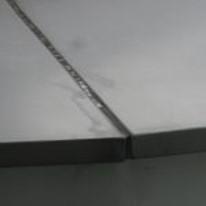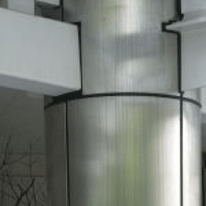Case 3
- Introduction
- Causes of Defects
- Good Practices
- Standards
- Maintenance and Diagnostics
- Remedial
- Similar Cases
- References
Good Practices
Design
Select sealant joint type and mode of application in accordance with BS 6213 or SS 654; including requirements for quality management programme. Adopt the guidelines on the selection of construction
sealants in accordance with BS 8221-2, SS 509 or equivalent. For grading of sealant (i.e., pourable or non-sag), refer to ASTM C920-18 (tested), ASTM C639-15 or equivalent. Make provisions for access for regular sealant inspection and avoid placing design features/services across joints that impede access for maintenance.
Throw off water from the façade altogether through an outward projecting sill or overhanging eaves (which incorporate a throat or drip lines on its underside) or provide blocking features such as copings/
flashings. Use efficient scupper drains/downpipes to channel water down and away from the façade. To
provide drip grooves along the underside of projecting features.
Also consider:
- Use open joint instead of butt joint system to avoid the direct exposure of the sealant to the hot tropical sun.
- Use capping to protect the sealant joint. This will ensure that no chemical reaction will take place at the sealant joint.
- Care should be taken when applying sealant so as to prevent dirt from being attracted onto the metal surface.
- Sealants must be continuous and of consistent quality.
- Avoid bridging angles, particularly with mastic strip sealants. Apply extra thickness at corners as a precaution.
- Sealants should be applied to dry, non-greasy surfaces.
- Workmanship on-site should be ensured so that good designs are properly executed. A maintenance schedule could be worked out so that the facade is cleaned periodically with cleaning agents recommended by the facade manufacturer.
Construction
Apply sealants in accordance with recommended guidelines in BS 8000-0, BS 6093, SS 654 or equivalent.
Perform dynamic peel test and dynamic tensile test on structural sealants in accordance with ISO 28278-2 or equivalent. Carry out non-destructive and destructive inspection procedures of weatherproofing
sealant joints in accordance with ASTM C1521-19, BS EN 15651-1 or equivalent. Use a two-cloth method to properly clean and prime.
Correct sealant applications to ensure consistent and continuous quality. Avoid misaligned panels of cladding in accordance with BS 8000-0 or equivalent.


